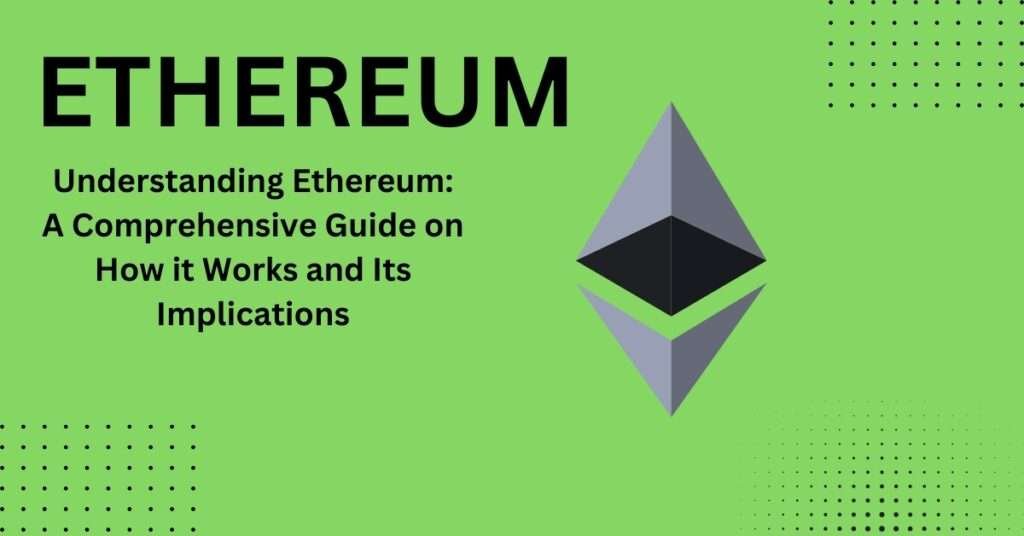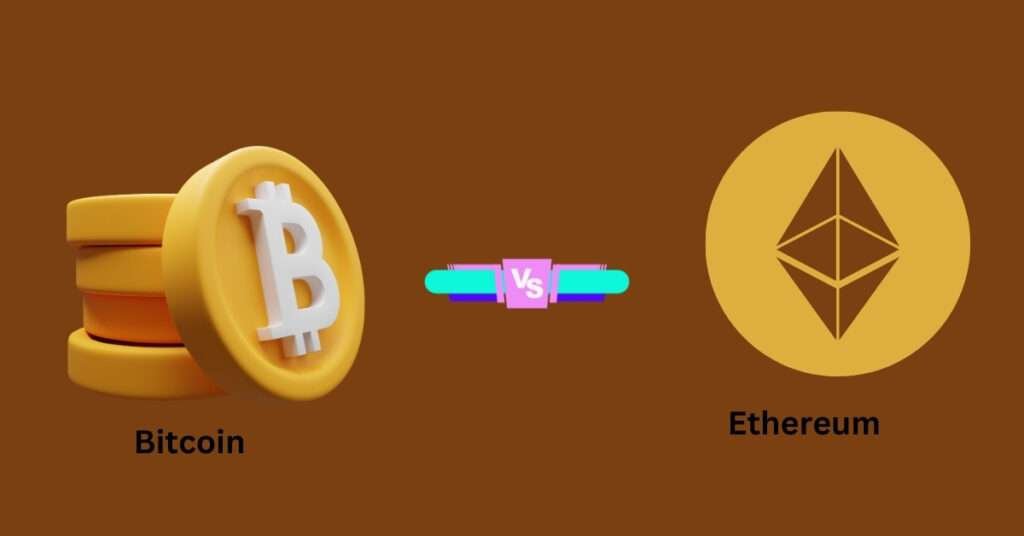
Introduction to Ethereum
In the world of digital currencies and decentralized technologies, Ethereum has emerged as a prominent player. With its revolutionary blockchain platform, Ethereum offers much more than just a digital currency. But before diving into the intricacies of Ethereum, it’s essential to understand the basics of blockchain technology.
Blockchain technology is a decentralized ledger that records and verifies transactions across multiple computers or nodes. It enables transparent and secure peer-to-peer transactions without the need for intermediaries. The blockchain consists of blocks, each containing a set of transactions. These blocks are linked together using cryptographic hashes, forming a chain of blocks.
Now that we have a grasp of blockchain technology, let’s explore what exactly Ethereum is and how it works. Ethereum is an open-source, decentralized blockchain platform that enables developers to build and deploy smart contracts and decentralized applications (DApps).
At its core, Ethereum is powered by Ether (ETH), its native cryptocurrency. Ether serves as a fuel for executing smart contracts and is used to incentivize participants in the Ethereum network. Unlike Bitcoin, which is primarily a digital currency, Ethereum’s primary focus is on executing and enforcing smart contracts.
Ethereum's key features and advantages
Ethereum offers several key features and advantages that set it apart from other blockchain platforms. One of the most significant features is its ability to execute smart contracts. Smart contracts are self-executing contracts with predefined rules and conditions that are automatically enforced by the Ethereum network. These contracts eliminate the need for intermediaries, reduce costs, and increase transparency.
Another advantage of Ethereum is its scalability. Ethereum’s blockchain architecture allows for greater scalability compared to other blockchain platforms. With the introduction of Ethereum 2.0, which will transition Ethereum from a Proof-of-Work (PoW) to a Proof-of-Stake (PoS) consensus algorithm, scalability issues will be addressed, making Ethereum more efficient and capable of handling a higher volume of transactions.

While Ethereum and Bitcoin are both based on blockchain technology, they serve different purposes. Bitcoin was created as a digital currency, aiming to provide an alternative to traditional fiat currencies. On the other hand, Ethereum was designed as a platform for building decentralized applications and executing smart contracts.
Another significant difference between Ethereum and Bitcoin is their underlying technology. Bitcoin uses a simpler scripting language, while Ethereum’s scripting language is Turing-complete. This means that Ethereum’s scripting language is more expressive and powerful, allowing for more complex and versatile applications.
Smart contracts and their role in Ethereum
Smart contracts are at the heart of Ethereum’s functionality. They are self-executing contracts with the terms of the agreement directly written into code. Once the conditions defined in the contract are met, the contract is automatically executed. Smart contracts eliminate the need for intermediaries and provide a transparent and secure way to enforce agreements.
The role of smart contracts in Ethereum extends beyond simple financial transactions. They can be used in various industries, such as supply chain management, real estate, voting systems, and more. Smart contracts enable automation, reduce costs, and increase efficiency in many sectors of the economy.
The Ethereum Virtual Machine (EVM)
To execute smart contracts, Ethereum utilizes the Ethereum Virtual Machine (EVM). The EVM is a runtime environment that executes smart contracts written in Ethereum’s programming language, Solidity. It ensures that smart contracts run in a secure and isolated manner, preventing malicious code from affecting the rest of the network.
The EVM is responsible for processing transactions and executing smart contract code. It acts as a decentralized computer, running computations and storing data across multiple nodes in the Ethereum network. This distributed nature of the EVM ensures the resilience and security of the Ethereum platform.
Ethereum mining and consensus algorithms
Ethereum, like Bitcoin, relies on a consensus algorithm to validate and secure transactions. Currently, Ethereum uses a Proof-of-Work (PoW) consensus algorithm, similar to Bitcoin. In PoW, miners compete to solve complex mathematical puzzles to validate transactions and add them to the blockchain. However, this process requires a significant amount of computational power and energy consumption.
To address scalability and energy efficiency concerns, Ethereum is transitioning to a Proof-of-Stake (PoS) consensus algorithm. In PoS, participants, called validators, are chosen to create new blocks based on the number of coins they hold and are willing to “stake” as collateral. This transition, known as Ethereum 2.0, will greatly reduce the energy consumption of the Ethereum network and increase its scalability.
Use cases and real-world applications of Ethereum
The versatility of Ethereum has led to a wide range of use cases and real-world applications. One prominent use case is decentralized finance (DeFi), which aims to recreate traditional financial systems using smart contracts and blockchain technology. DeFi applications enable users to lend, borrow, and trade digital assets without the need for intermediaries. This creates a more open and accessible financial system.
Another area where Ethereum has made significant contributions is in the realm of tokenization. Ethereum’s ERC-20 standard allows for the creation of fungible tokens, which represent assets such as currencies, commodities, or even equity in a company. These tokens can be freely traded and transferred on the Ethereum blockchain, providing liquidity and facilitating crowdfunding campaigns.
The future implications of Ethereum
The future of Ethereum holds great potential. As more developers and businesses adopt Ethereum’s platform, we can expect to see a proliferation of innovative decentralized applications and smart contracts. Ethereum’s scalability improvements, such as Ethereum 2.0, will further enhance its capabilities and allow for broader adoption.
Additionally, Ethereum’s focus on interoperability and collaboration with other blockchain platforms will enable seamless communication and the exchange of assets between different networks. This will foster a more connected and efficient blockchain ecosystem.

Challenges and limitations of Ethereum
Despite its many advantages, Ethereum also faces challenges and limitations. One of the main challenges is scalability. As the Ethereum network grows, the number of transactions increases, leading to congestion and higher fees. Ethereum 2.0 aims to address these issues, but it remains to be seen how effectively it can scale.
Another limitation is the reliance on external data sources for smart contracts. Smart contracts in Ethereum cannot directly access real-world data, which limits their functionality. Various solutions, such as oracle services, are being developed to bridge this gap and enable smart contracts to interact with external data sources.
Conclusion
Ethereum has revolutionized the blockchain landscape with its powerful platform for executing smart contracts and building decentralized applications. Its ability to automate agreements, increase transparency, and reduce costs has far-reaching implications across various industries. While Ethereum faces challenges in terms of scalability and external data integration, its future looks promising with ongoing developments and upgrades. As the blockchain ecosystem continues to evolve, Ethereum will undoubtedly play a significant role in shaping the future of decentralized technologies.
Stay informed and explore the possibilities of Ethereum by joining online communities, attending blockchain conferences, and engaging with Ethereum developers and enthusiasts. Embrace the decentralized future and witness the transformative power of Ethereum firsthand.


Leave a comment